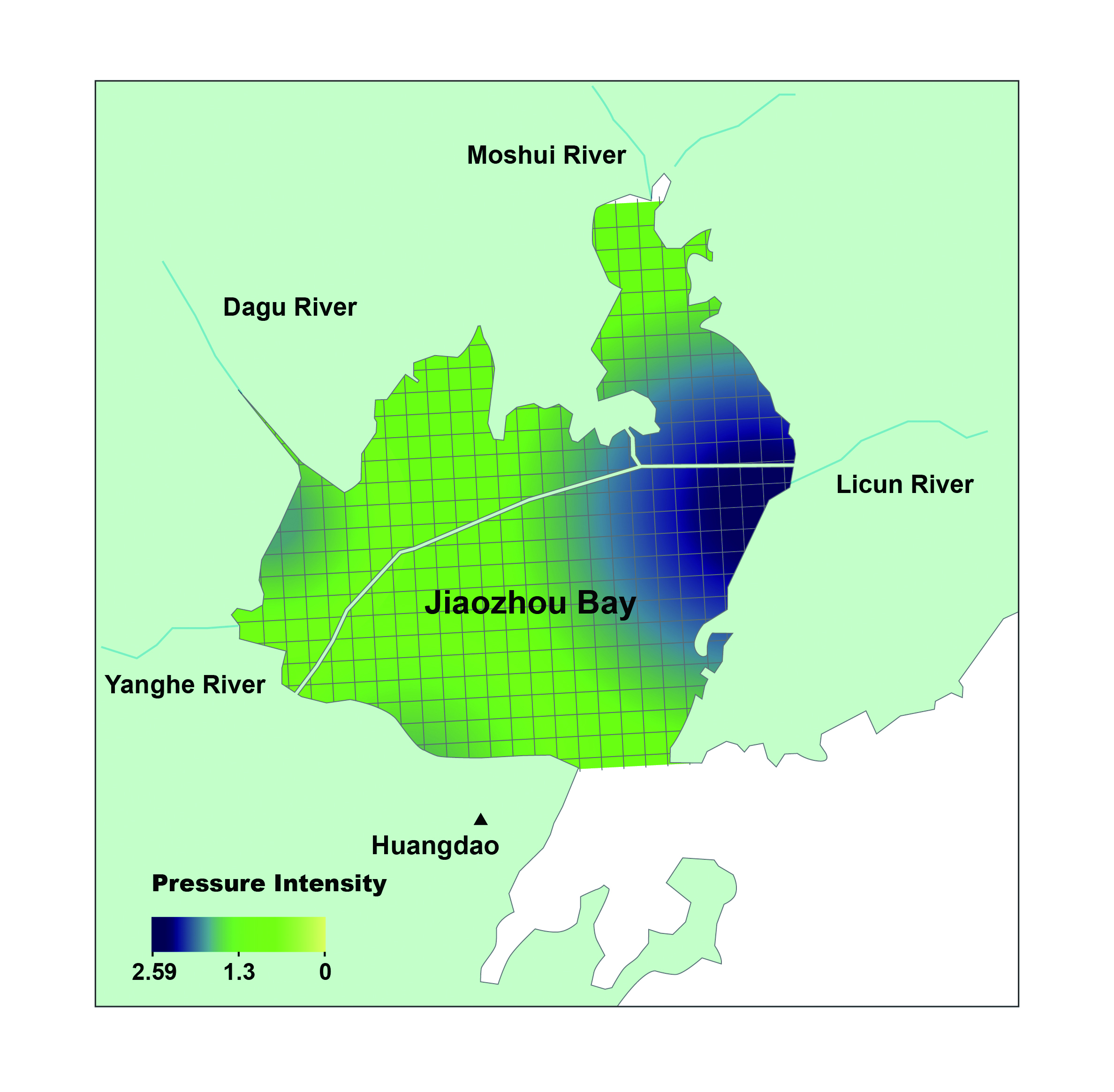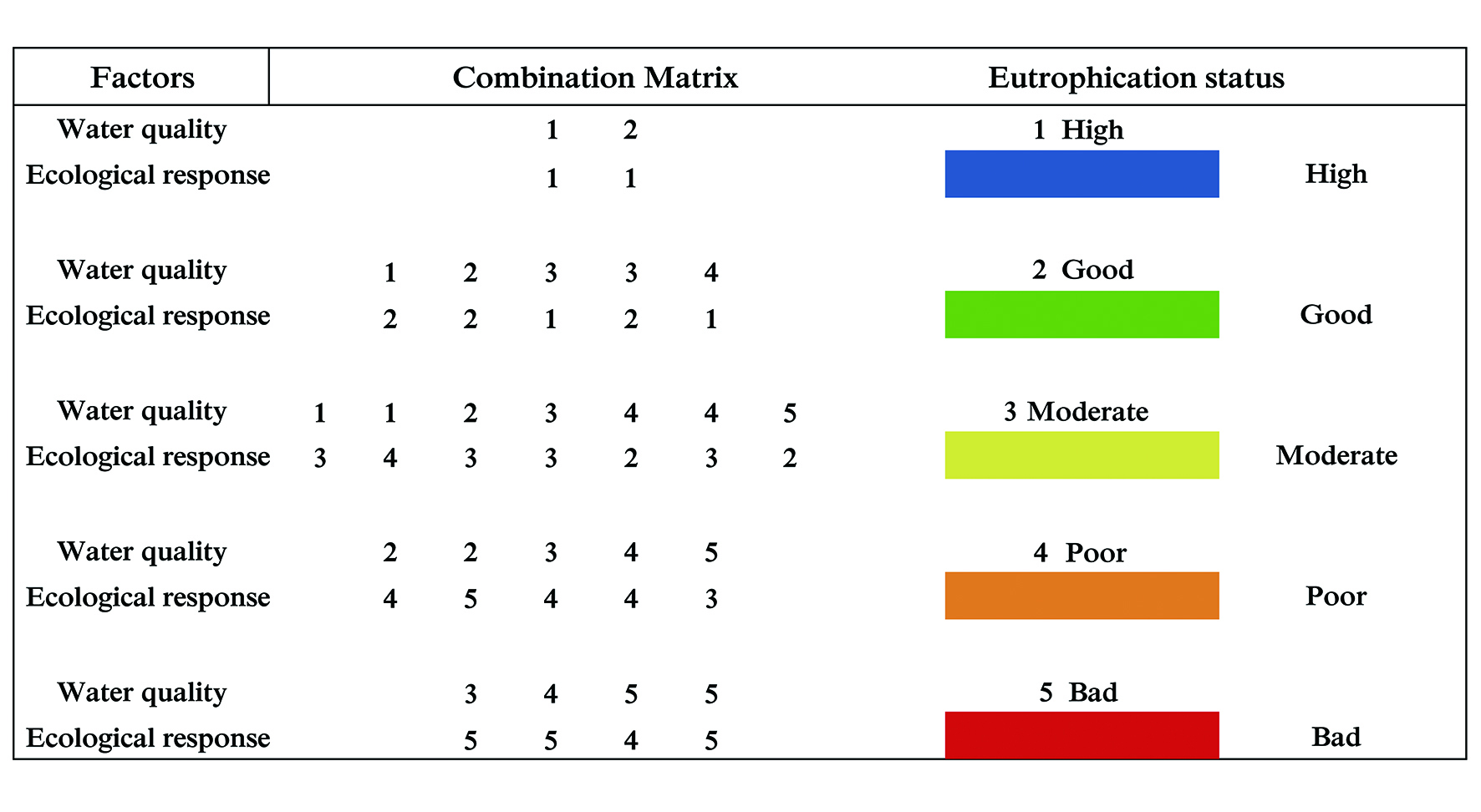SDG14: Life below Water
Construction and application of an integrated eutrophication assessment model for typical coastal waters of China(2019)
Scale: Local





Study area: Coastal Waters, China
Land-based human activities are increasing and producing a large amount of pollutants, which have led to rapid deterioration of the eutrophication status in coastal areas via river discharges, underground waste input, or atmospheric deposition. Confronted with nutrient pressure, coastal ecosystems have responded through ecological signals, such as hypoxia and HABs. Based on the framework of “Pressure-State-Response” an integrated eutrophication assessment model was developed, which reflects both water quality (the pressure part) and ecological effect (the response part). By using this model, estuaries and bays along China's coast were assessed at multiple scales, not only to understand the human pressure and ecological symptoms, but also to define a comprehensive eutrophication status. Such a model and evaluated results provide scientific and technical support for decision making processes in eutrophication management.
Target 14.1: By 2025, prevent and significantly reduce marine pollution of all kinds, particularly from activities, including marine debris and nutrient pollution.
Indicator 14.1.1: Eutrophication index and concentration of floating plastic pollutants.
Method
The model considers different sensitivities and hydrologic conditions in different areas to reflect the characteristics of different anthropogenic pressures. The study considered primary and secondary ecological responses to detect the degree and estimate the stage of coastal eutrophication. The human management response part was added in the model by combining data on human pressures with ecological responses to comprehensively evaluate the trophic status in varied coastal areas. The framework of the model ensured the comprehensive and objective assessment of coastal areas.
Data used in this case
Indicators of nutrients in typical coastal areas of China— hl-a, biomass, and dissolved oxygen—were obtained from the CAS Big Earth Data Program database, and some other data were collected from published literature, as well as related bulletins of China.
Results and analysis
In each case, the anthropogenic pressures and the ecological responses were individually evaluated initially. For example, in Jiaozhou Bay and adjacent areas, the results (human pressure, Figure 1 left, and ecosystem symptom HABs, Figure 1 right) indicate that there were spatial shifts in ecosystem symptoms, as the area experiences frequent HAB starting within the bay moving outwards in response to human activities that were also observed to have rapidly increased within the same period outside the bay. These results provide valuable information on HAB timings and patterns to devise a management plan.
Furthermore, as shown in the Figure 2, the eutrophication status of each case was evaluated comprehensively, considering both human pressures and ecological responses. The results also indicate that the eutrophication problems in the inner bays and big estuaries were very serious where anthropogenic activities are concentrated in China (Figure 2). These areas include Bohai Bay, Jiaozhou Bay, Laizhou Bay, and Changjiang River Estuary, and more. In these areas, response strategies should be developed to reduce terrigenous nutrients and facilitate ecological restoration.


Figure 1. Assessment of human pressure and typical eutrophication symptoms (HABs) in Jiaozhou Bay, China (JB: Jiaozhou Bay; OJB: Waters outside Jiaozhou Bay).


Figure 2. Evaluation of the trophic status in typical coastal waters of China.
| Highlights |
| Develop an integrated eutrophication assessment model reflecting both water quality (the pressure part) and ecological effect (the response part). Scientifically evaluate the eutrophication status of typical coastal waters. The indicators of both human activity-derived pressures and ecological responses are relatively important and should all be taken into consideration. In typical waters along China's coast, the eutrophication problem in the inner bays and big estuaries were very serious where anthropogenic activities were dense, and the ecological responses were also serious. |
Outlook
This method has been listed as a marine standard for the assessment of coastal eutrophication in China, and it will ultimately be published in the near future.
Representing China in the framework of NOWPAP, six international reports were proposed to UNEP, and such eutrophication detection methods will be continuously involved in the future plans issued by NOWPAP.
The relevant data will be updated continuously, to further contribute to the realization of SDGs through evaluation results and decision support.

Large scale HAB occurrences in a typical eutrophicated coastal area of China

